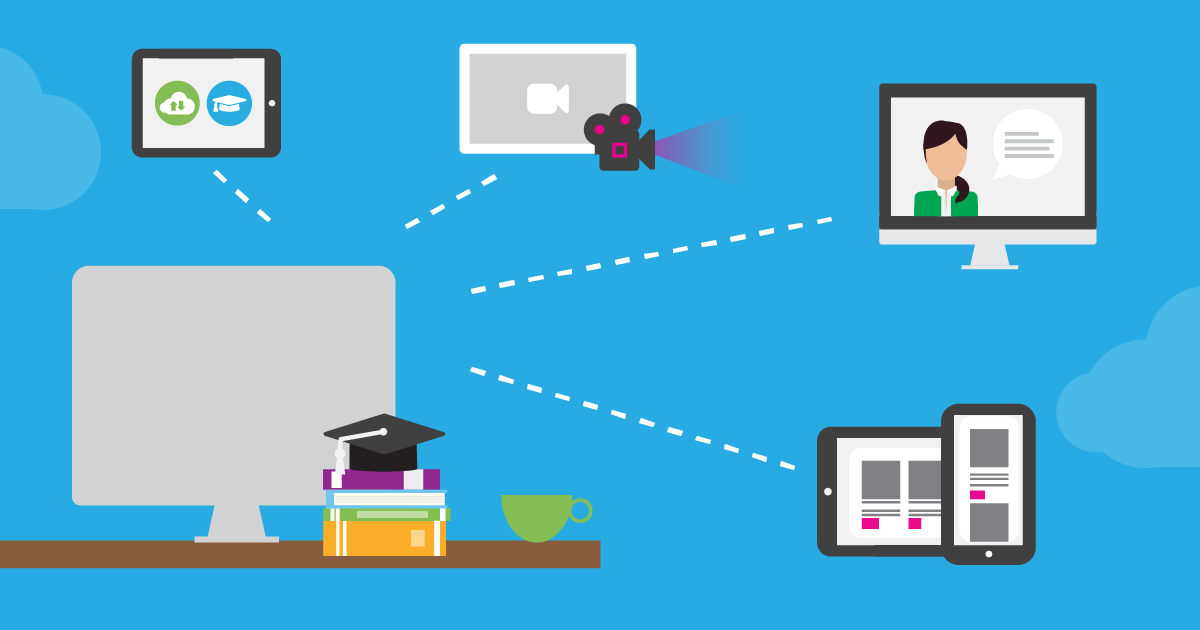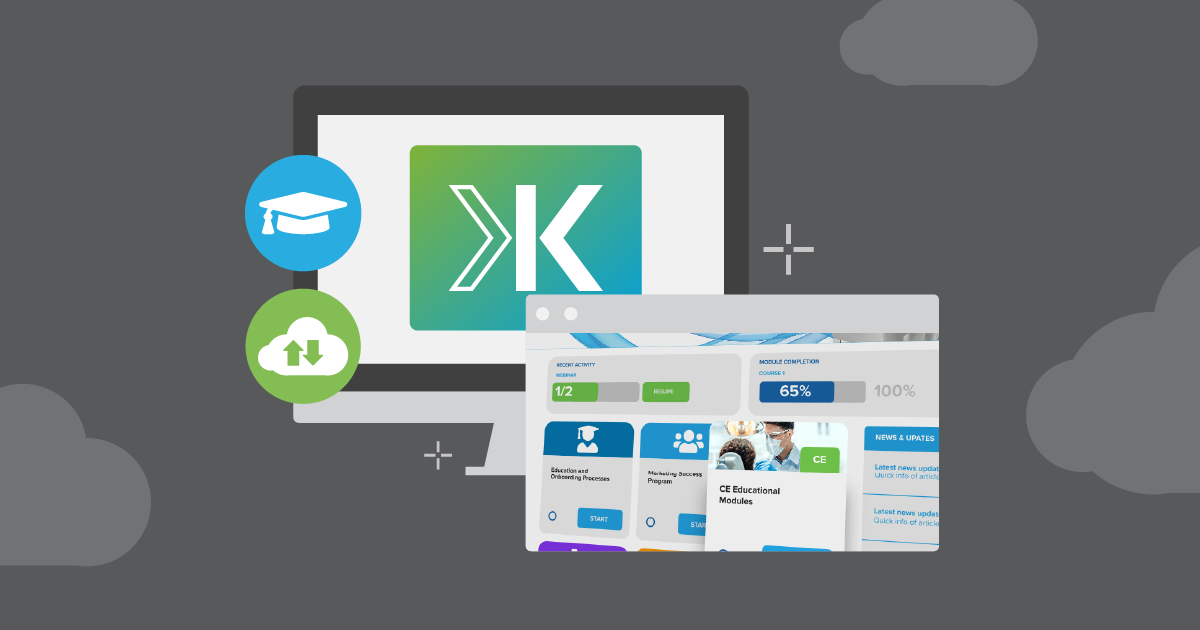By offering a continuing education (CE) program, you are building your business as a trusted resource for customers and prospects. An established program can lead to seasoned brand advocates, ongoing engagement with your content and stronger lead generation.
Is your business looking for a new way to engage prospects and retain current customers? Continuing education (CE) could be the solution.
If your target audience requires CE credits as a part of their job role, why not have them come to you? You can position your company as who they turn to for all their educational needs. By offering these opportunities, you’re building a sense of trust among your customers and prospects—which can result in more sales for your business.
What is Continuing Education?
A CE is generally defined as any post-secondary learning or programs that are pursued after formal education. As CE programs continue to gain popularity, you should evaluate implementing a program into your business approach.
Consider these insights:
- 54 percent of adults in the labor force said it will be essential for them to get training and develop new skills to keep up with workplace demands (Pew Research)
- 63 percent of adults with a bachelor’s degree or higher level of education feel they will need to keep advancing their skills throughout their career (Pew Research)
- 42 percent of global Fortune 500 companies already use some form of technology to train their employees (eLearn2Grow)
- 94 percent of employees say that they would be more willing to stay in those corporations that prioritize and invest in employee career development (LinkedIn)
CE credits are required to maintain certification in fields such as health care, engineering and construction. If your business operates in one of these fields—or even another applicable one—offering CE courses could be to your benefit.
Benefits of Offering Continuing Education
CE courses present valuable opportunities for your business and customers:
- Stronger customer retention: There’s a link between providing your customers educational opportunities and an increase in their loyalty toward your brand. Customers who feel knowledgeable and empowered are more likely to be satisfied and less likely to leave.
- Loyal brand advocates: Developing CE opportunities helps show your customers how invested you are in them. In turn, this can help position your business as a trusted resource and support future lead generation.
- Ongoing engagement: Through continuous development of your program, you can keep customers coming back through additional courses. We recommend trying to establish a cadence where customers can expect a new course within a certain time frame.
- Increased competitive advantage: If your business is offering CE courses, you hold an advantage over your competitors who may not offer comparable learning opportunities. This makes your brand more attractive to prospective customers.
- Stronger lead generation: This ties in with an increased competitive advantage. For prospective customers looking for CE opportunities, if your company has an established program, you’re more likely to attract more leads.
- Increased engagement with your product: If you have a product that you want to showcase, you can incorporate it into your program; customers will then have the chance to interact with your product and become familiar with it. This could also spark an interest in your customers to research your other product offerings.
Seize the opportunity for your business and offer CE courses before your competitors do—or you may start to see a decrease in customer retention. Offering CE courses isn’t just about the here and now; it also impacts the long-term success of your business.

Steps to Creating a Continuing Education Program
Putting together a CE course takes time but doesn’t have to be overly complex.
Use the following as a guide when building a course:
- Determine your customers’ needs. What is it that your customers need from you in order for them to be fulfilled? If you want your program to be successful, you must conduct research on your end to formulate a course strategy.
- Establish your program’s objectives. What is your business striving for with the launch of your CE program? Defining your program's goals beforehand helps you measure your overall effectiveness over time.
- Determine the topics covered. What will your program cover? You must figure out what you will be teaching throughout your program and how this will satisfy your customers.
- Curate content for your program. Which types of content are you going to include? There are many forms of content that your business can integrate into its program; we’ll dive more into these in the next section.
- Schedule and publish your program. When will you publish your program? It will help to promote your CE program prior to publishing it to create excitement among customers.
- Monitor your program and adjust as needed. How effective is your program as a whole? Which pieces of content are performing better than others? Determining which learning content is and isn’t working can help bolster your program over the long term.
The needs of your customers can change over time and by analyzing your program, you can make the necessary changes to accommodate your audience. We recommend offering a post-course evaluation, such as a survey, so that your customers can provide their feedback. You can even consider using a learning management system (LMS) for your CE program to more easily track platform usage and asset access.
Formulating an effective CE program is beneficial to both your customers and your business—and through the use of varied content formats, you can build the most effective program for your customers.
Content Formats for Your CE Program
It’s not just about what your CE program is offering; how you present it is critical, as well. If your program is to succeed over the long term, consider these content formats:
- Webinars: Webinars are comprehensive resources for customers to attain information from and give viewers the opportunity to learn new material without having to travel long distances or interrupt their schedules. If you’re doing a live webinar, speakers can interact with the audience and field questions or conduct surveys. Ensure that you incorporate a post-session test or quiz that gives learners the opportunity to earn their CE credit(s).
- Video: Viewers claim they retain 95 percent of a message when obtained through video. Video presents an opportunity for you to execute storytelling throughout your CE courses and more effectively present your messaging to customers.
- Mobile: The demand for learning materials that are accessible on a mobile device is growing—and 70 percent of users felt more motivated while learning on their mobile device compared to their computer. When developing your CE program, be sure to incorporate opportunities such as a video course that customers can access anywhere via their mobile device.
- On-demand: Your customers have busy schedules, which could make it hard to attend live webinars or other courses. By providing on-demand CE content, you’re giving your audience the flexibility they want. With an integrated LMS or digital asset management (DAM) platform, you have the ability to easily house your content for on-demand learning opportunities.
Now that you know how to set up a CE program for your customers and have content ideas in mind, it's time to put your plan into action. An LMS can be an effective tool to house your CE program, and the Konvert team can help you with any questions you may have.
How Konvert™ Can Help
Konvert™ combines the power of LMS and DAM platforms to create a unique learning environment for your customers. With built-in module-based learning, it’s easy to organize your learning content and assign out courses to users. Our LMS enables you to track a user’s learning progress, quiz scores and the number of certificates earned. With Konvert, you can easily create and manage CE courses tailored for your desired audience.
Sonendo® is a prominent endodontic technology company that has prioritized being a leader in educational opportunities for endodontists. Sonendo worked with the Konvert team to build a custom CE program that gave endodontists the ability to gain CE credits directly through its LMS Portal. By integrating Konvert into its continuing education plan, Sonendo is equipped to position itself as a trusted thought leader in the endodontic community and support future lead generation.
Contact us today to learn more about building continuing educational opportunities for your customers.



